Minglei Shu
Pre-training Everywhere: Parameter-Efficient Fine-Tuning for Medical Image Analysis via Target Parameter Pre-training
Aug 27, 2024Abstract:Parameter-efficient fine-tuning (PEFT) techniques have emerged to address issues of overfitting and high computational costs associated with fully fine-tuning in the paradigm of self-supervised learning. Mainstream methods based on PEFT involve adding a few trainable parameters while keeping the pre-trained parameters of the backbone fixed. These methods achieve comparative, and often superior, performance to fully fine-tuning, demonstrating the powerful representation ability of the pre-trained backbone. Despite its success, these methods typically ignore the initialization of the new parameters, often relying solely on random initialization. We argue that if pre-training is significantly beneficial, it should be applied to all parameters requiring representational capacity. Motivated by this insight, we propose a simple yet effective fine-tuning framework based on Target Parameter Pre-training (TPP). The target parameters refer to the new parameters introduced during fine-tuning. TPP includes an additional stage before PEFT to pre-train these target parameters. During this stage, the pre-trained backbone parameters are frozen, and only the target parameters are trainable. A defined pre-text task is used to encourage the target parameters to learn specific representations of downstream data. When PEFT is subsequently employed, the pre-trained target parameters are loaded to enhance fine-tuning efficiency. The proposed TPP framework is versatile, allowing for the integration of various pretext tasks for pre-training and supporting different PEFT methods as backbones. We evaluated the fine-tining performance of our method using five public datasets, including three modalities and two task types. The results demonstrate that the proposed TPP can be easily integrated into existing PEFT methods, significantly improving performance.
From Few to More: Scribble-based Medical Image Segmentation via Masked Context Modeling and Continuous Pseudo Labels
Aug 23, 2024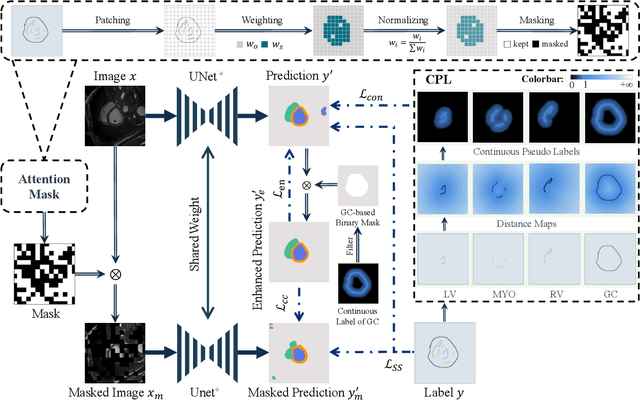
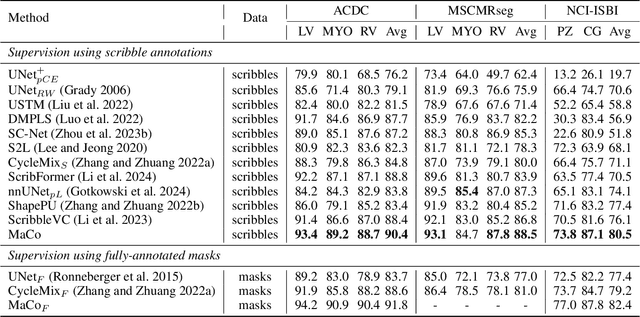
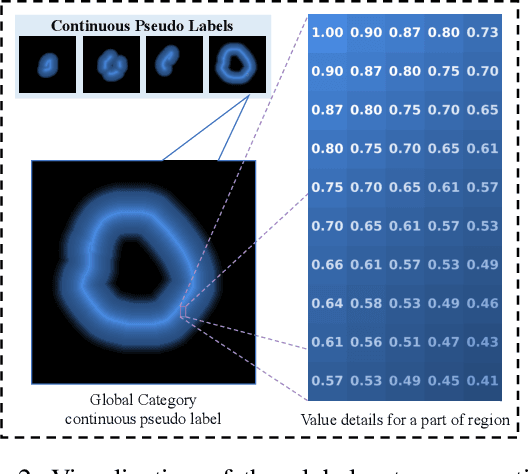
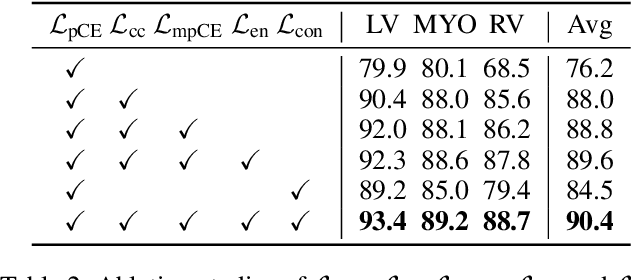
Abstract:Scribble-based weakly supervised segmentation techniques offer comparable performance to fully supervised methods while significantly reducing annotation costs, making them an appealing alternative. Existing methods often rely on auxiliary tasks to enforce semantic consistency and use hard pseudo labels for supervision. However, these methods often overlook the unique requirements of models trained with sparse annotations. Since the model must predict pixel-wise segmentation maps with limited annotations, the ability to handle varying levels of annotation richness is critical. In this paper, we adopt the principle of `from few to more' and propose MaCo, a weakly supervised framework designed for medical image segmentation. MaCo employs masked context modeling (MCM) and continuous pseudo labels (CPL). MCM uses an attention-based masking strategy to disrupt the input image, compelling the model's predictions to remain consistent with those of the original image. CPL converts scribble annotations into continuous pixel-wise labels by applying an exponential decay function to distance maps, resulting in continuous maps that represent the confidence of each pixel belonging to a specific category, rather than using hard pseudo labels. We evaluate MaCo against other weakly supervised methods using three public datasets. The results indicate that MaCo outperforms competing methods across all datasets, setting a new record in weakly supervised medical image segmentation.
Grouping Boundary Proposals for Fast Interactive Image Segmentation
Sep 08, 2023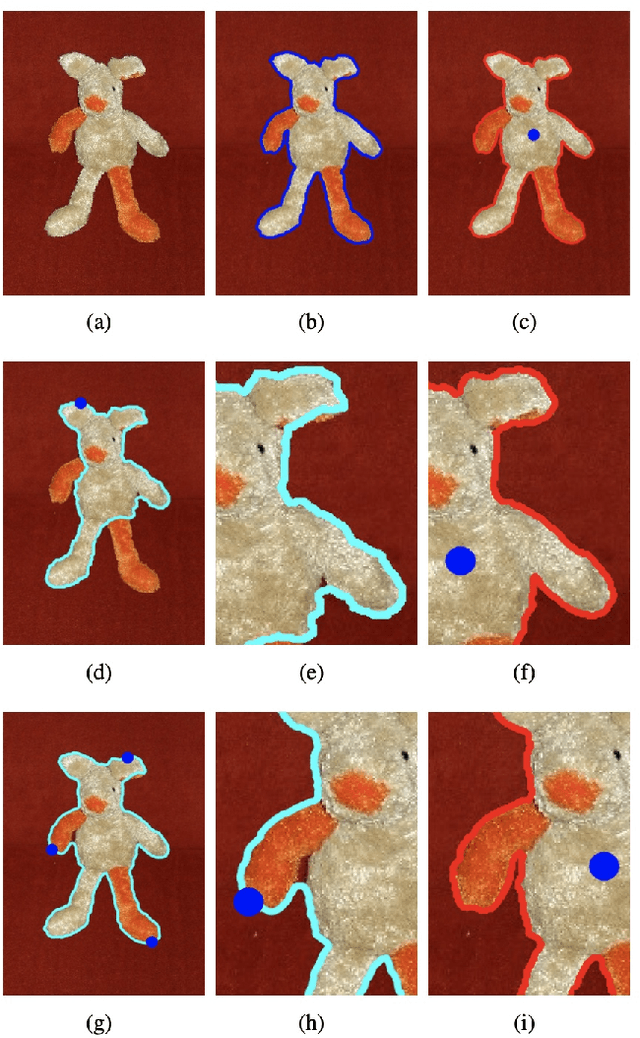
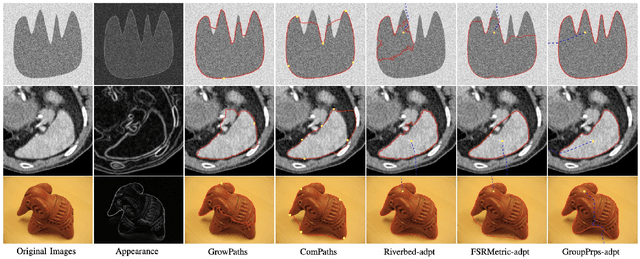
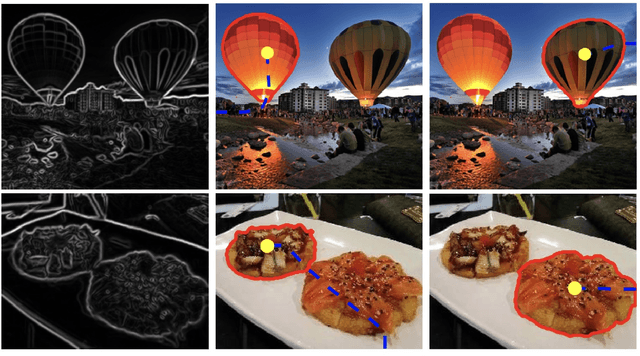

Abstract:Geodesic models are known as an efficient tool for solving various image segmentation problems. Most of existing approaches only exploit local pointwise image features to track geodesic paths for delineating the objective boundaries. However, such a segmentation strategy cannot take into account the connectivity of the image edge features, increasing the risk of shortcut problem, especially in the case of complicated scenario. In this work, we introduce a new image segmentation model based on the minimal geodesic framework in conjunction with an adaptive cut-based circular optimal path computation scheme and a graph-based boundary proposals grouping scheme. Specifically, the adaptive cut can disconnect the image domain such that the target contours are imposed to pass through this cut only once. The boundary proposals are comprised of precomputed image edge segments, providing the connectivity information for our segmentation model. These boundary proposals are then incorporated into the proposed image segmentation model, such that the target segmentation contours are made up of a set of selected boundary proposals and the corresponding geodesic paths linking them. Experimental results show that the proposed model indeed outperforms state-of-the-art minimal paths-based image segmentation approaches.
Energy and Spectrum Efficient Federated Learning via High-Precision Over-the-Air Computation
Aug 15, 2022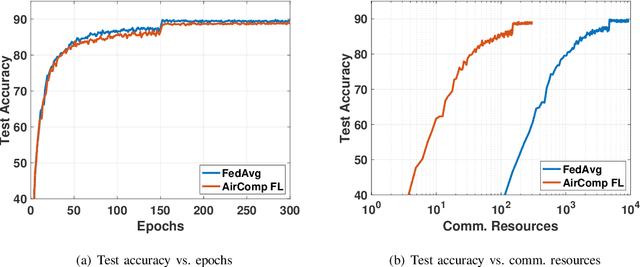
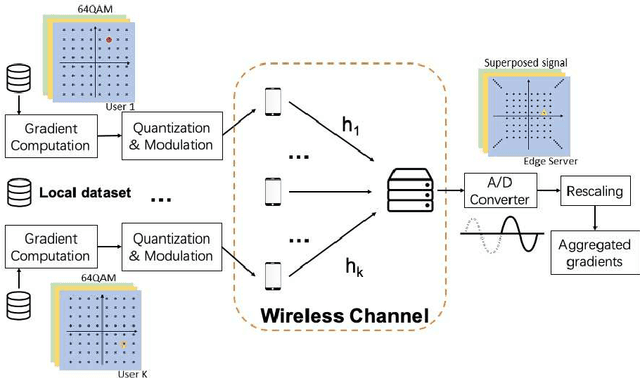

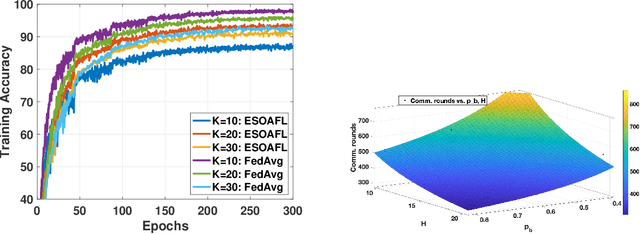
Abstract:Federated learning (FL) enables mobile devices to collaboratively learn a shared prediction model while keeping data locally. However, there are two major research challenges to practically deploy FL over mobile devices: (i) frequent wireless updates of huge size gradients v.s. limited spectrum resources, and (ii) energy-hungry FL communication and local computing during training v.s. battery-constrained mobile devices. To address those challenges, in this paper, we propose a novel multi-bit over-the-air computation (M-AirComp) approach for spectrum-efficient aggregation of local model updates in FL and further present an energy-efficient FL design for mobile devices. Specifically, a high-precision digital modulation scheme is designed and incorporated in the M-AirComp, allowing mobile devices to upload model updates at the selected positions simultaneously in the multi-access channel. Moreover, we theoretically analyze the convergence property of our FL algorithm. Guided by FL convergence analysis, we formulate a joint transmission probability and local computing control optimization, aiming to minimize the overall energy consumption (i.e., iterative local computing + multi-round communications) of mobile devices in FL. Extensive simulation results show that our proposed scheme outperforms existing ones in terms of spectrum utilization, energy efficiency, and learning accuracy.
Geodesic Models with Convexity Shape Prior
Nov 01, 2021

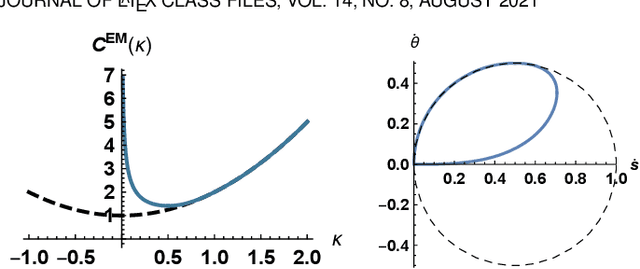
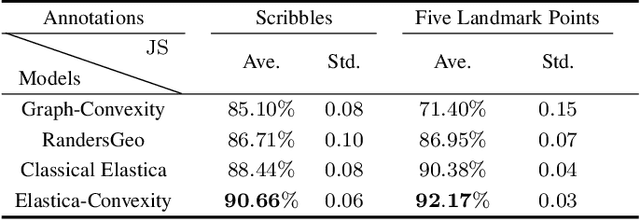
Abstract:The minimal geodesic models based on the Eikonal equations are capable of finding suitable solutions in various image segmentation scenarios. Existing geodesic-based segmentation approaches usually exploit image features in conjunction with geometric regularization terms, such as Euclidean curve length or curvature-penalized length, for computing geodesic curves. In this paper, we take into account a more complicated problem: finding curvature-penalized geodesic paths with a convexity shape prior. We establish new geodesic models relying on the strategy of orientation-lifting, by which a planar curve can be mapped to an high-dimensional orientation-dependent space. The convexity shape prior serves as a constraint for the construction of local geodesic metrics encoding a particular curvature constraint. Then the geodesic distances and the corresponding closed geodesic paths in the orientation-lifted space can be efficiently computed through state-of-the-art Hamiltonian fast marching method. In addition, we apply the proposed geodesic models to the active contours, leading to efficient interactive image segmentation algorithms that preserve the advantages of convexity shape prior and curvature penalization.
To Talk or to Work: Delay Efficient Federated Learning over Mobile Edge Devices
Nov 01, 2021

Abstract:Federated learning (FL), an emerging distributed machine learning paradigm, in conflux with edge computing is a promising area with novel applications over mobile edge devices. In FL, since mobile devices collaborate to train a model based on their own data under the coordination of a central server by sharing just the model updates, training data is maintained private. However, without the central availability of data, computing nodes need to communicate the model updates often to attain convergence. Hence, the local computation time to create local model updates along with the time taken for transmitting them to and from the server result in a delay in the overall time. Furthermore, unreliable network connections may obstruct an efficient communication of these updates. To address these, in this paper, we propose a delay-efficient FL mechanism that reduces the overall time (consisting of both the computation and communication latencies) and communication rounds required for the model to converge. Exploring the impact of various parameters contributing to delay, we seek to balance the trade-off between wireless communication (to talk) and local computation (to work). We formulate a relation with overall time as an optimization problem and demonstrate the efficacy of our approach through extensive simulations.
Geodesic Paths for Image Segmentation with Implicit Region-based Homogeneity Enhancement
Aug 16, 2020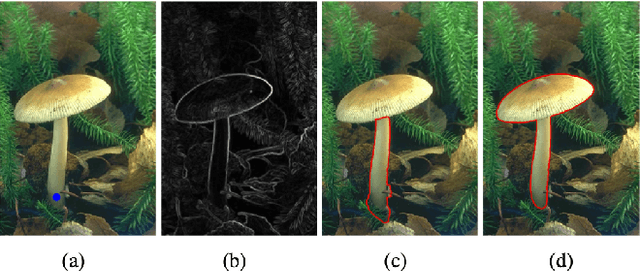
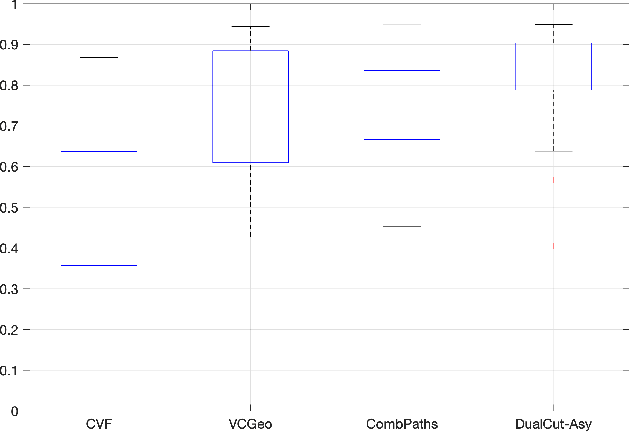
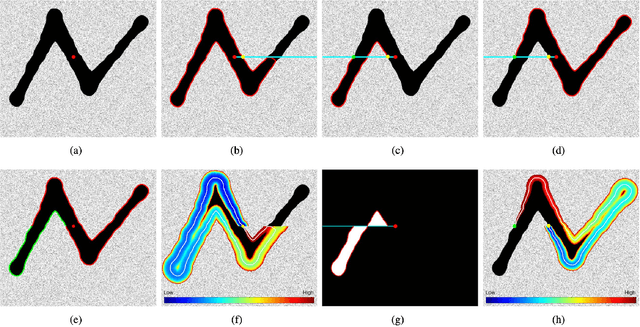

Abstract:Minimal paths are considered as a powerful and efficient tool for boundary detection and image segmentation due to its global optimality and well-established numerical solutions such as fast marching algorithm. In this paper, we introduce a flexible interactive image segmentation model based on the minimal geodesic framework in conjunction with region-based homogeneity enhancement. A key ingredient in our model is the construction of Finsler geodesic metrics, which are capable of integrating anisotropic and asymmetric edge features, region-based homogeneity and/or curvature regularization. This is done by exploiting an implicit method to incorporate the region-based homogeneity information to the metrics used. Moreover, we also introduce a way to build objective simple closed contours, each of which is treated as the concatenation of two disjoint open paths. Experimental results prove that the proposed model indeed outperforms state-of-the-art minimal paths-based image segmentation approaches.
 Add to Chrome
Add to Chrome Add to Firefox
Add to Firefox Add to Edge
Add to Edge